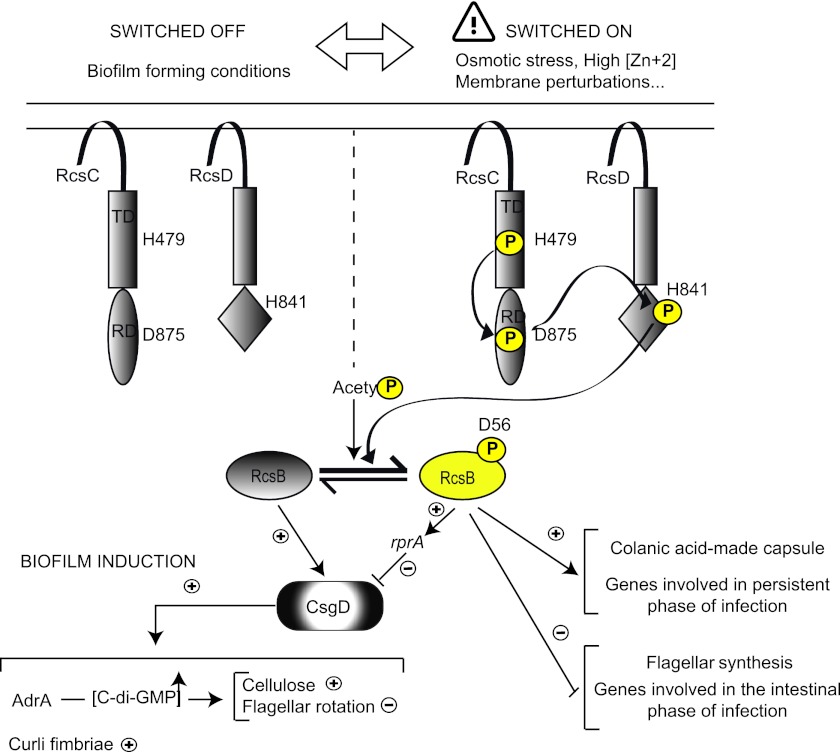Fig 7.
Model for the regulation of Salmonella biofilm formation by the Rcs phosphorelay pathway. In this model, when the Rcs system is off, the unphosphorylated form of RcsB induces the expression of CsgD. The ensuing CsgD induces the expressions of genes encoding curli fimbriae and the diguanylate cyclase AdrA. The accumulation of AdrA enhances the levels of the secondary messenger c-di-GMP, which activates the synthesis of cellulose and biases flagellar rotation toward the counterclockwise direction through binding to YcgR (37). When the Rcs system is on, the levels of phosphorylated RcsB increase, leading to the repression of CsgD in a mechanism partially dependent on the small noncoding RNA RprA. Moreover, the flagellar master genes flhDC and some genes required for the intestinal phase of infection are repressed, whereas genes involved in the synthesis of the colanic acid capsule and factors required for persistent infection are upregulated.

